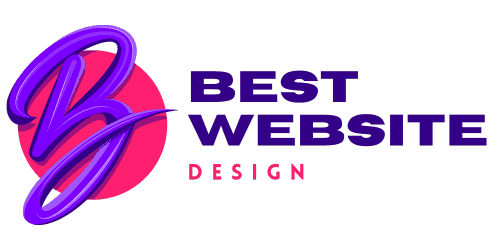Best Website Design for Health Care
Table of Contents
Best practices in healthcare website design
In today’s digital age, having a well-designed and user-friendly website is crucial for healthcare organizations. A website that provides a seamless user experience can enhance patient engagement, improve accessibility, and build trust and credibility. This article explores the best practices in healthcare website design, focusing on the importance of user experience, ensuring accessibility, building trust and credibility, and optimizing performance and speed.
Key Takeaways
- Responsive design is essential for healthcare websites to ensure a seamless user experience across different devices.
- Intuitive navigation helps users easily find the information they need on healthcare websites.
- Clear call-to-actions guide users towards desired actions, such as booking appointments or accessing patient portals.
- Compliance with Web Content Accessibility Guidelines (WCAG) is crucial to ensure all users have equal access to healthcare information.
- Adding alternative text to images improves accessibility for users with visual impairments.
Importance of User Experience in Healthcare Website Design
Responsive Design
Responsive design is a crucial aspect of healthcare website design. It ensures that the website adapts and provides an optimal viewing experience across different devices and screen sizes. By using responsive design, healthcare websites can reach a wider audience and improve user satisfaction. It allows patients to easily access important information, schedule appointments, and interact with healthcare providers. Additionally, responsive design enhances the overall user experience by making navigation intuitive and content easily readable. A well-designed healthcare website with responsive design can effectively engage users and drive conversions.
| Key Benefits of Responsive Design |
| – Improved user experience – Increased website traffic – Higher conversion rates |
A responsive design is not just a trend, but a necessity in today’s mobile-first world. It ensures that healthcare websites are accessible and user-friendly for all patients, regardless of the device they use.
Intuitive Navigation
Intuitive navigation is a crucial aspect of healthcare website design. It allows users to easily find the information they need, enhancing their overall user experience. By organizing content logically and hierarchically, healthcare websites can guide users through different sections and pages. Clear labels and descriptive headings help users understand the purpose of each navigation item. Additionally, incorporating a search functionality enables users to quickly locate specific information. By prioritizing intuitive navigation, healthcare websites can ensure that users can easily navigate through the site and find the content they are looking for.
| Key Features |
| – Clear labels and headings – Logical and hierarchical organization of content – Search functionality |
Intuitive navigation is like a roadmap that guides users through the healthcare website, ensuring they reach their desired destination efficiently and effortlessly.
Clear Call-to-Actions
Clear call-to-actions are essential in healthcare website design to guide users towards desired actions. These actions can include scheduling appointments, requesting information, or accessing patient portals. By using bold and attention-grabbing buttons or links, healthcare websites can effectively direct users to take the desired actions. Additionally, providing a user-friendly and intuitive interface enhances the overall user experience, making it easier for users to find and interact with the call-to-actions. A well-designed healthcare website ensures that users can easily navigate and understand the purpose of each call-to-action, ultimately leading to improved user engagement and conversion rates.
| Action | Description |
| Schedule Appointment | Allows users to book appointments online |
| Request Information | Enables users to request additional information |
| Access Patient Portal | Provides secure access to patient records and resources |
A clear call-to-action is like a signpost that guides users towards their healthcare goals.
Ensuring Accessibility in Healthcare Website Design
Compliance with Web Content Accessibility Guidelines (WCAG)
Ensuring compliance with the Web Content Accessibility Guidelines (WCAG) is crucial for healthcare websites. These guidelines provide a set of standards and best practices to make websites accessible to all users, including those with disabilities. By following WCAG, healthcare websites can ensure that their content is perceivable, operable, understandable, and robust. This includes providing alternative text for images, enabling keyboard accessibility, and adhering to colour contrast ratios. Accessibility is not only a legal requirement but also a moral obligation to provide equal access to healthcare information and services. By prioritizing accessibility, healthcare websites can reach a wider audience and provide a better user experience for all.
Alternative Text for Images
Alternative text, also known as alt text, plays a crucial role in ensuring accessibility in healthcare website design. Alt text provides a textual description of images for users who are visually impaired or have difficulty seeing images. It is important to include descriptive and meaningful alt text that accurately represents the content and context of the image. Additionally, the alt text should be concise and avoid unnecessary details. By providing alt text, healthcare websites can ensure that all users, including those with visual impairments, can understand and engage with the content.
A table can be used to summarize the importance of alt text in healthcare website design:
| Importance of Alt Text |
| – Enhances accessibility – Provides context for images – Supports screen readers |
Furthermore, a list of best practices for writing alt text can be helpful:
- Keep it concise
- Be descriptive
- Avoid using phrases like ‘image of’ or ‘picture of
- Use keywords that convey the image’s purpose
In conclusion, alt text is a vital element in healthcare website design that improves accessibility and ensures all users can access and understand the content.
Building Trust and Credibility in Healthcare Website Design
Professional Design and Branding
Professional design and branding are crucial for healthcare websites as it help to establish trust and credibility with visitors. A well-designed website reflects the professionalism and expertise of the healthcare organization. It should have a visually appealing layout, a consistent colour scheme, and use high-quality images. Additionally, the website should have a clear and recognizable logo that represents the brand. Branding elements such as fonts, colours, and graphics should be consistent throughout the website to create a cohesive and memorable user experience.
In addition to design, branding also involves creating a unique identity for the healthcare organization. This can be achieved through the use of a tagline, mission statement, and brand messaging. By effectively communicating the organization’s values and mission, visitors are more likely to trust and engage with the website.
| Element | Importance |
| Consistent branding | High |
| Visual appeal | High |
| Professional layout | High |
A well-designed website is the first step towards building trust and credibility in the healthcare industry.
Patient Testimonials and Success Stories
Patient testimonials and success stories play a crucial role in building trust and credibility in healthcare website design. These stories provide real-life examples of how healthcare organizations have positively impacted patients’ lives. By showcasing these stories, healthcare websites can inspire potential patients and instil confidence in the quality of care provided. Additionally, testimonials can be used to highlight specific services or treatments offered by the organization. These stories serve as powerful endorsements and can help potential patients make informed decisions about their healthcare options. Including a table that summarizes the key success stories and a list of patient testimonials can further enhance the impact of these stories. As one patient shared, “The treatment I received at this healthcare organization transformed my life. I am forever grateful.”
Secure and Privacy-focused Design
In healthcare website design, secure and privacy-focused design is of utmost importance. Patients need to feel confident that their personal information is protected and that their privacy is respected. This can be achieved through the implementation of secure encryption methods, two-factor authentication, and regular security audits. Additionally, healthcare websites should clearly communicate their privacy policies and provide patients with control over their data. By prioritizing secure and privacy-focused design, healthcare websites can build trust and credibility with their users.
| Security Measures | Description |
| Secure Encryption | Encrypting sensitive data to protect it from unauthorized access |
| Two-factor Authentication | Adding an extra layer of security by requiring users to provide two forms of identification |
| Regular Security Audits | Conducting regular assessments to identify and address potential security vulnerabilities |
Some important considerations for secure and privacy-focused design include:
- Ensuring compliance with relevant data protection regulations
- Providing clear information on how patient data is collected, used, and stored
- Obtaining explicit consent from patients for data sharing
Remember, patient trust is crucial in healthcare website design, and a secure and privacy-focused approach is essential for building that trust.
Optimizing Performance and Speed in Healthcare Website Design
Caching and Content Delivery Networks (CDNs)
Caching and Content Delivery Networks (CDNs) play a crucial role in optimizing the performance and speed of healthcare websites. Caching involves storing frequently accessed data in a temporary storage location, reducing the need to fetch data from the server repeatedly. CDNs help in delivering website content to users faster by storing copies of the website’s static files in multiple servers located in different geographical locations. By utilizing caching and CDNs, healthcare websites can provide a faster and more responsive user experience. In addition, minimizing HTTP requests by combining multiple files into one can further enhance the website’s loading speed.
| Benefits of Caching and CDNs |
| – Improved website performance – Reduced server load – Faster content delivery – Enhanced user experience |
Implementing caching and utilizing CDNs are essential steps in ensuring that healthcare websites are able to handle high traffic volumes and deliver content efficiently.
Frequently Asked Questions
What is the importance of user experience in healthcare website design?
User experience is crucial in healthcare website design as it directly impacts how users interact with the website. A positive user experience ensures that visitors can easily navigate, find information, and complete tasks on the website, leading to increased engagement and satisfaction.
How can responsive design benefit healthcare websites?
Responsive design ensures that healthcare websites adapt and display properly on various devices and screen sizes. This improves the user experience and accessibility, allowing users to access the website seamlessly from desktops, tablets, and mobile devices.
What is intuitive navigation and why is it important?
Intuitive navigation refers to a website’s menu and navigation structure that is easy to understand and navigate. It helps users quickly find the information they are looking for, reducing frustration and improving overall user experience.
Why are clear call-to-actions important in healthcare website design?
Clear call-to-actions guide users to take specific actions on a healthcare website, such as scheduling an appointment, contacting the clinic, or accessing patient resources. They help improve user engagement, conversion rates, and overall website effectiveness.
What is web accessibility compliance and why is it important in healthcare website design?
Web accessibility compliance refers to designing and developing websites that are accessible to people with disabilities. It is important in healthcare website design to ensure equal access to information and services for all individuals, regardless of their abilities.
Why is providing alternative text for images crucial in healthcare website design?
Alternative text (alt text) for images is crucial in healthcare website design as it provides a textual description of the image for those who are visually impaired or have difficulty seeing images. It allows screen readers to convey the content of the image to the user, ensuring inclusivity and accessibility.







